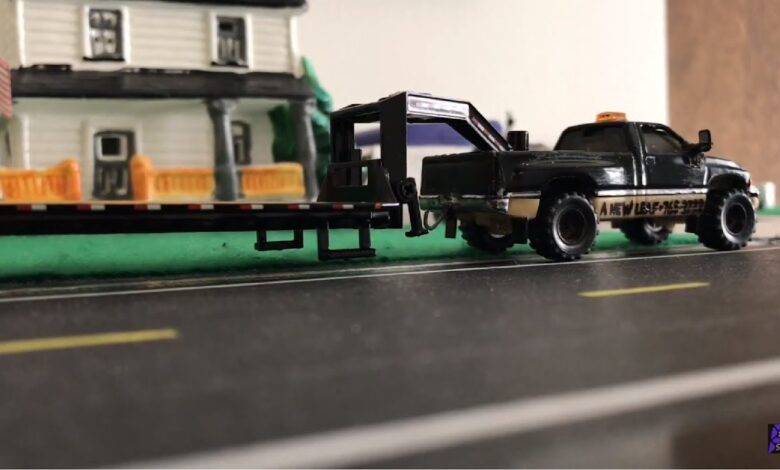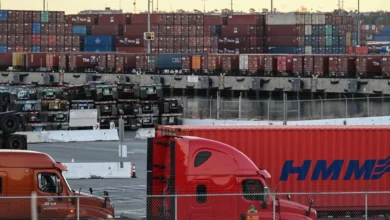Unlocking Efficiency and Sustainability with Greenlight Truck and Trailer

In today’s rapidly evolving world, the transportation industry faces a pressing challenge: how to meet the growing demand for goods and services while minimizing its environmental impact. Conventional trucks and trailers, powered by fossil fuels, contribute significantly to carbon emissions and air pollution. However, innovative solutions like Truck and Trailer offer a promising path towards a more sustainable future. By harnessing cutting-edge technology and -friendly design principles, Unlocking Efficiency and Sustainability with Truck and aim to reduce emissions, lower operational costs, and enhance overall efficiency.
Understanding Greenlight Truck and Trailer
represents a revolutionary approach to transportation, blending advanced engineering with environmental consciousness. Unlike traditional vehicles, which rely solely on gasoline or diesel, vehicles integrate alternative fuels such as electric, hydrogen, or Additionally, they feature aerodynamic designs, lightweight materials, and energy-efficient components to maximize fuel efficiency and minimize environmental impact. With their state-of-the-art technology and commitment to sustainability, Greenlight Truck and Trailer sets a new standard for -friendly transportation solutions.
The Need Greenlight Truck and Trailer Truck and Trailer Sustainable Transportation
The imperative for sustainable transportation has never been clearer. As the global population grows and urbanization accelerates, the demand for transportation services continues to rise. However, this increased mobility comes at a cost to the environment. Conventional trucks and trailers emit harmful pollutants such as carbon dioxide, nitrogen oxides, and particulate matter, contributing to climate change and poor air quality. Moreover, the reliance on finite fossil fuels poses risks to energy security and economic stability. In this context, the transition to sustainable transportation is not just a choice but a necessity for safeguarding the planet and ensuring a livable future for generations to come.
Benefits of Greenlight Truck and Trailer
The adoption of offers a host of benefits for businesses, communities, and the environment alike. One of the most significant advantages is the reduction in carbon emissions. By using alternative fuels and optimizing vehicle design, Greenlight vehicles emit fewer greenhouse gases per mile traveled compared to their conventional counterparts. This not only helps mitigate climate change but also improves air quality and public health. Additionally, Greenlight technology enhances fuel efficiency, leading to lower operating costs for businesses. With rising fuel prices and volatile markets, the ability to save on fuel expenses can make a significant difference in the bottom line. Furthermore, Greenlight Truck and Trailer promotes energy independence by diversifying fuel sources and reducing reliance on imported oil. By embracing sustainable transportation solutions, businesses can achieve greater resilience and competitiveness in the face of shifting energy landscapes.
Greenlight Truck and Trailer Greenlight Technology Works
At the heart of Greenlight Truck and Trailer is a suite of innovative technologies designed to maximize efficiency and minimize environmental impact. Aerodynamic enhancements, such as streamlined body shapes and side fairings, reduce drag and improve fuel efficiency on the road. Additionally, lightweight materials like aluminum and carbon fiber help reduce vehicle weight, further enhancing fuel economy. Greenlight vehicles also incorporate advanced propulsion systems, such as electric motors or hydrogen fuel cells, to power their journeys. These alternative powertrains offer cleaner and quieter operation compared to traditional diesel engines, making them ideal for urban environments and sensitive ecosystems. Moreover, Greenlight technology includes onboard monitoring and optimization systems that continuously analyze vehicle performance and recommend efficiency improvements in real-time. By leveraging these cutting-edge innovations, Greenlight Truck and Trailer delivers superior performance while minimizing its environmental footprint.
Case Studies and Success Stories
Across industries and regions, companies are reaping the rewards of embracing Greenlight Truck and Trailer. One such success story comes from a logistics firm that replaced its entire fleet of diesel trucks with Greenlight vehicles. By making this strategic investment, the company not only reduced its carbon emissions by 50% but also cut its fuel costs by over 30%. This significant reduction in operating expenses allowed the company to reinvest savings into expanding its business and improving customer service. Similarly, a municipal transportation agency implemented Greenlight buses on its urban routes, resulting in cleaner air and quieter streets for residents. These real-world examples demonstrate the transformative potential of Greenlight technology in driving sustainability and economic growth.
Challenges and Limitations
Despite its numerous benefits, the widespread adoption of Greenlight Truck and Trailer faces several challenges and limitations. One of the primary obstacles is the upfront cost of transitioning to green vehicles. While Greenlight technology offers long-term savings in fuel and maintenance expenses, the initial investment can be prohibitive for some businesses, particularly small and medium-sized enterprises. Additionally, the availability of alternative fuels and infrastructure remains limited in many areas, posing challenges for companies looking to operate Greenlight vehicles at scale. Moreover, regulatory uncertainty and policy inconsistencies may deter companies from making the switch to sustainable transportation. Without clear incentives and supportive policies, businesses may hesitate to invest in green technologies, slowing the pace of innovation and progress.
Overcoming Obstacles: Solutions and Strategies
To address these challenges and accelerate the adoption of Greenlight Truck and Trailer, concerted efforts are needed from policymakers, industry stakeholders, and the public. Financial incentives, such as tax credits and grants, can help offset the upfront costs of purchasing green vehicles and infrastructure. Governments at all levels can also implement regulations and standards that incentivize the use of alternative fuels and promote the deployment of eco-friendly transportation solutions. Moreover, public-private partnerships can facilitate the development of charging and refueling infrastructure for electric, hydrogen, and biofuel vehicles. By working together to overcome barriers and create a supportive ecosystem, we can unlock the full potential of Greenlight Truck and Trailer and usher in a new era of sustainable transportation.
The Future of Sustainable Transportation
As technology continues to advance and awareness of environmental issues grows, the future of sustainable transportation looks increasingly promising. Greenlight Truck and Trailer represents just one piece of the larger puzzle, with innovations such as autonomous vehicles, connected logistics, and smart infrastructure poised to revolutionize the way we move goods and people. Moreover, the shift towards sustainability is not just driven by regulatory mandates or economic incentives but by a fundamental shift in values and priorities. Consumers, businesses, and governments are increasingly recognizing the importance of preserving the planet for future generations and are taking action to reduce their carbon footprint. In this context, Greenlight Truck and Trailer serves as a beacon of hope, demonstrating what is possible when we combine ingenuity, creativity, and commitment to a common purpose.
Implementing Greenlight Truck and Trailer
For companies looking to embrace Greenlight Truck and Trailer, several steps can help facilitate a smooth transition and maximize the benefits of green technology. First and foremost, businesses should conduct a comprehensive analysis of their current fleet operations and identify opportunities for improvement. This may involve evaluating routes, vehicle utilization rates, and fuel consumption patterns to pinpoint areas where Greenlight technology can make the most significant impact. Once potential benefits are identified, companies can develop a phased implementation plan that prioritizes key routes or vehicle types for conversion to green vehicles. Additionally, training programs should be provided to drivers and maintenance staff to ensure they are familiar with the unique features and requirements of Greenlight technology. By investing in training and education, companies can empower their employees to operate and maintain green vehicles effectively, maximizing performance and longevity.
Environmental Impact Assessment
Measuring and evaluating the environmental impact of greenlight truck and trailer is essential for demonstrating the efficacy of green technologies and informing future decision-making. Environmental impact assessments typically involve quantifying greenhouse gas emissions, air pollutants, and other relevant indicators associated with both conventional and green vehicles. This may require collecting data on fuel consumption, vehicle miles traveled, and operational characteristics from fleet management systems or onboard telematics devices. By comparing the




